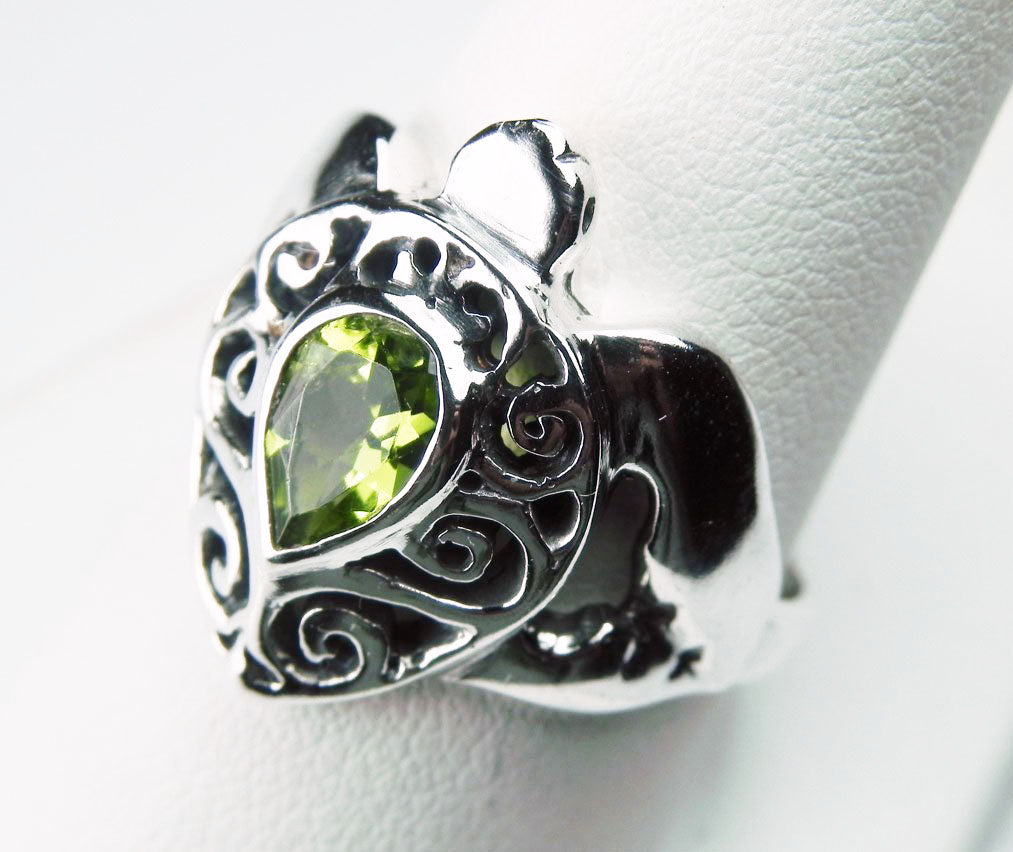Peridot, a variety of the mineral olivine, is the birthstone for the month of August. Sadly, it is an underappreciated stone, as so many commercial quality and commonly available stones do not do this beautiful gemstone justice. Off-color peridots can have a drab and unattractive hue and so many people born in August talk about how much they dislike their birthstone. Now that spinel has joined peridot as the birthstone for this month, August babies have yet another reason to shun this stone in favor of something else.
Peridot color is often described as apple green, spring green or lime green. We use peridot in many FantaSea jewelry pieces as this is a green that looks so much like the color of Caribbean foliage, especially the palm tree! Visualize a tropical palm tree, swaying in the breeze and the colors of its fronds look like that of good quality peridot!
Historically, and dating back many hundreds of years, all green stones were considered emerald, all blue stones were sapphire and all red stones were ruby (kind of boring right?). Once gems began to be separated by class and mineral, peridot first found itself thrown into the topaz category, before it was recognized as a gem mineral in and of itself. Even more recently, the color grades for most gemstones were based on the purity of color and how much a gem looked like these popular stones. So the greener a green gemstone and the more it looked like an emerald, the more valuable. Gemstone grading has evolved a lot since then, but the value of a gemstone is still rooted in the comparison to these so-called “precious” stones.
Peridot’s color is described as yellowish-green, and will never come close to emerald’s deep green hue. Some lower quality peridots can have a grayish or brownish cast or even a milky appearance. Like many gemstones, in smaller sizes, peridot looks very light and more yellow but in larger sizes, this stone can have a bright, vivid “sunny” green color. I have always described the reason for this by using the example of a large cobalt blue glass vase, the vase itself is a rich, deep, blue color, but if you were to chip off a small shard of glass, it would be more of a sky blue. For the same reason, smaller gemstones do not have the depth of color that larger ones can. The photo below shows an example of vibrant Pakistani peridot and also shows the stone’s double refraction.
 photo by Daniel McMorris
photo by Daniel McMorris
Peridot is not a gemstone that is exceptionally hard nor tough. It is not an ideal ring for every day, even in a protected setting, as the stone is easily scratched. Larger stones and those in prong settings in rings should be worn with care.
Interesting Peridot facts:
- Peridot crystals have been found in meteorites that have hit the earth, however, such specimens are rare. Most commercially available peridot is mined on planet earth.
- The largest peridot ever found was on Saint John’s Island, also known as Zabargad, in the Red Sea. It weighs just over 311 carats and is on display in the Smithsonian Museum in Washington, D.C.
- Some of the beaches on the island of Oahu, Hawaii contain tiny peridot crystals and some of Hawaii’s volcanoes have produced peridot crystals large enough to cut.
Check out some of our favorite FantaSea designs, set with this gem, click here >> Peridot Jewelry





Lexi
March 28, 2022
I just love peridots! I love them so much, in fact, that I got one as an engagement ring! It isn’t even my birthstone but I don’t really believe in that sort of thing, I just like the stone a lot. On St. Patrick’s Day, my now fiancé organized a scavenger hunt all around town that led my art-deco three-stone peridot ring hidden inside a “pot of gold!” It is a beautiful memory I will always cherish. And don’t worry, I plan on taking extremely good care of my ring by only wearing it a few times a week here and there because I would be devastated if something happened to it! Now if I ever hear someone mention how much they hate peridot, I’ll let them have a look at my ring and I’m sure their tune will change!